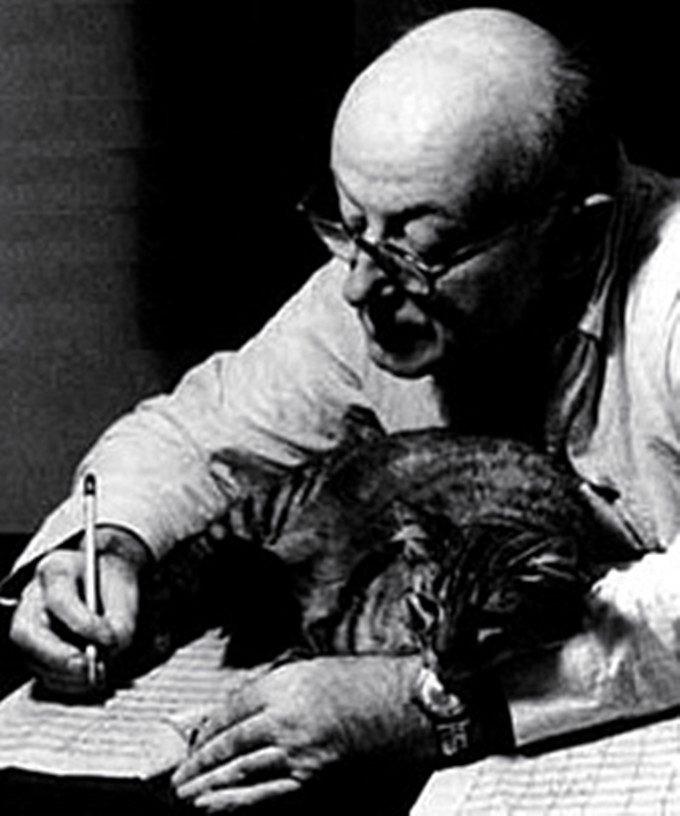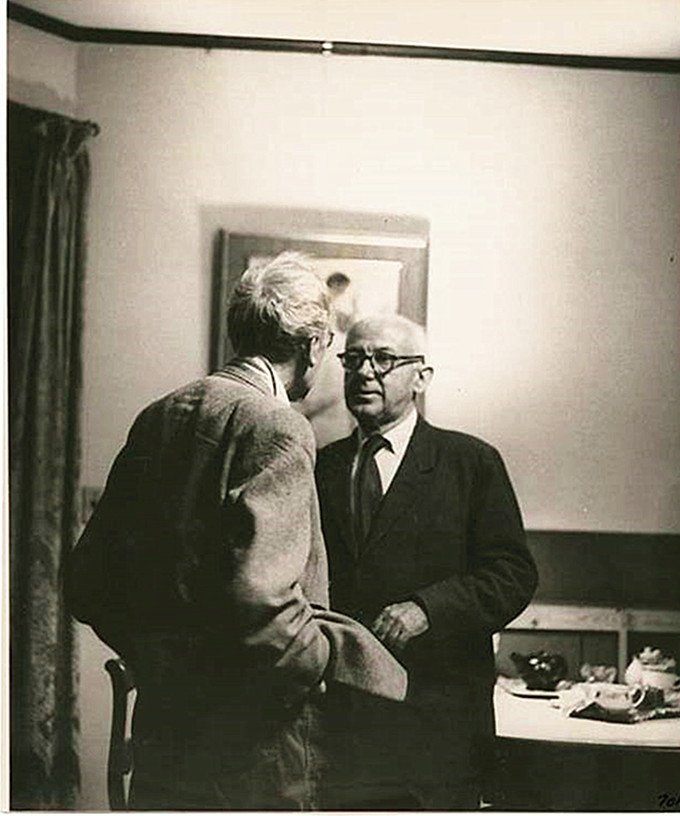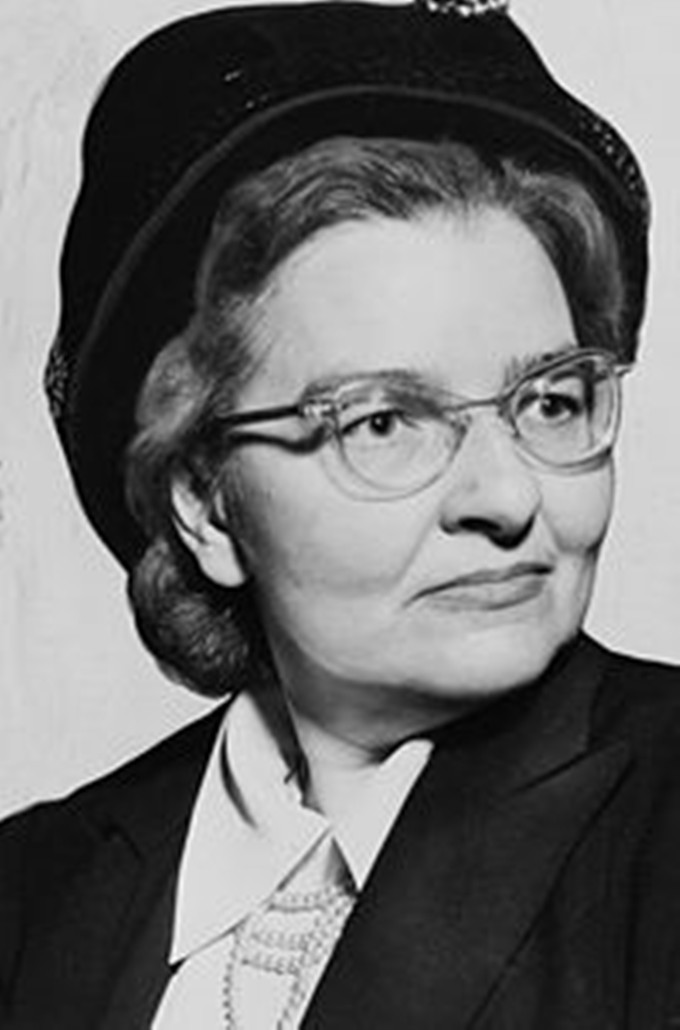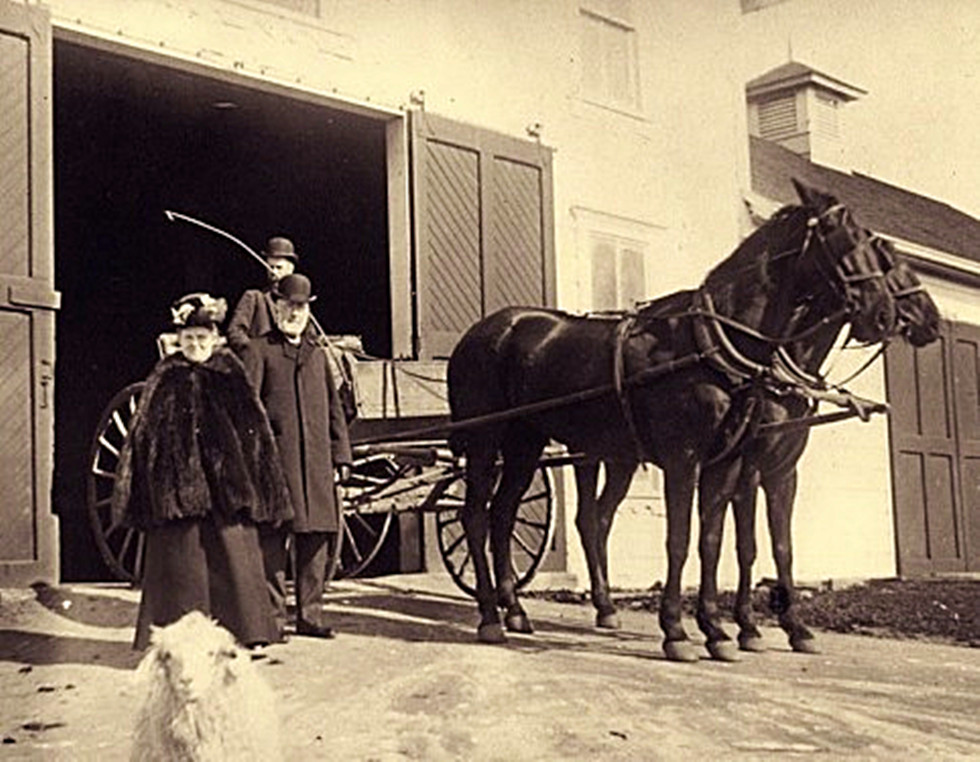| |
|
|
|
|
|
|
|
|
|
|
| |
| |
 |
|
| |
田润德
编译
文/图 2020-03-12 19:36 |
|
| |
|
|
|
|
| |
 |
|
|
|
| |
亨利·考威尔(Henry
Cowell 1897-1965年) |
|
|
|
| |
|
|
|
|
| |
【考埃尔】【Cowell】The Banshee 女鬼 String Piano 作品
|
|
|
|
| |
演奏乐器: 钢琴简介补充: Henry Cowell 亨利·考埃尔:
The Banshee 女鬼 作曲家著名的String Piano作品 |
|
|
|
| |
|
|
|
|
| |
音乐历史上的今天
3月12日1912年 15岁的亨利·考威尔(Henry Cowell)在旧金山音乐俱乐部展现了他的“音簇”特技,用自己的拳头和前臂砸音键。
1912年3月12曰,刚刚过完15岁生日的少年钢琴家海利·柯埃尔在一次钢琴独奏会上别出心裁地发明用胳膊肘而不是用手指弹钢琴的方法(也就是将手臂横过来将所有的白键和黑键一齐按下去),这成了引入注目的一天。有的理论家认为二十世纪现代音乐中常用的“音簇”手法就是从这一天开始的。当然,也有的理论家表示反对,据他们考证,早在十八世纪上半叶的意大利作曲家多米尼柯·斯卡拉蒂的古钢琴奏鸣曲中就已经有运用“音簇”手法的先例。
亨利·迪克逊·考威尔(Henry
Dixon Cowell,1897-1965年),美国作曲家、钢琴家、音乐教师。和查尔斯·艾夫斯一起,是美国先锋艺术早期领导人之一,他采用了各种融合声音与节奏的新方法,对先锋音乐进行了孜孜不倦的实验。在《玛努努的潮汐》(1912年)和其它钢琴作品中,他加入“音簇”(tone
cluster)——用拳头或手臂敲击相邻的钢琴键所产生的不协和音。考威尔生于加利福尼亚州门洛帕克。他是一位音乐神童,五岁开始学习小提琴。1912年在首次在旧金山登台演出,用钢琴演奏自己的一些作品。考威尔对当代音乐的发展贡献很多。他创办了《新音乐季刊》(New
Music Quarterly),出版新音乐曲谱。他还写了几本书,《新音乐资源》(New Musical
Resources)(1930年)即其中之一。
考威尔在旧金山的贫困中长大,在堪萨斯州、爱荷华州和俄克拉荷马州的家庭农场里长大。14岁时,他得到了一架钢琴,第二年,他举办了一场音乐会,演奏他的实验性钢琴作品。17岁时,他在加州大学学习,师从颇有影响力的音乐学家查尔斯·西格,西格说服他对传统的欧洲音乐技巧进行了系统的研究。他还敦促考威尔为他的创新制定一个理论框架,他在他的书《新音乐资源》(1919年;发表于1930年),是一项有影响力的音乐技术研究。在柏林与埃里希·冯·霍恩博斯特尔学习比较音乐学时,考埃尔对其他文化的音乐产生了兴趣; 后来,他学习了亚洲和中东音乐,并将其中的一些元素融入到自己的许多作品中。
1923年,考埃尔作为作曲家和钢琴家进行了一系列的欧洲巡回演出。他的许多音乐会引起了骚动,但也引起了现代欧洲主要作曲家的注意。1932年至1949年,他先后在哥伦比亚大学和纽约社会研究新学院任教。从1936年到1940年,他被关在圣昆廷州立监狱,罪名是同性恋行为。他在监狱里继续写音乐,1940年,他被假释给作曲家珀西·格兰杰看管。科威尔在1942年被完全赦免。
考埃尔的创新尤其体现在1912年至1930年间的钢琴作品中。为了寻找新的音色,他发展了音簇,钢琴上的和弦是通过同时按下几个相邻的键来产生的(例如,用前臂)。后来他把这些声音称为二次和声。与传统的三度音程相比,以二度音程为基础的和声。这些二次和声出现在他早期的钢琴作品中,如《
马努纳的潮汐》(1912);在他的钢琴协奏曲(1930);在他的交响乐和小号独奏的同步(1931)。他的其他一些钢琴作品,如1923年的《风之琴》和1925年的《女妖》,都是直接用琴弦演奏的,这些琴弦是用手或物体摩擦、拨动、敲击或以其他方式发出声音的。科威尔的《马赛克四重奏》(1935)是对音乐形式的一次实验;给表演者提供音乐块,按他们想要的顺序排列。与俄罗斯工程师列昂·特雷门(Leon
Theremin)合作,科威尔制作了电子乐器Rhythmicon,它可以产生16种不同的同步节奏,他还创作了《心律失常》 (1931;第一次演出是在1971年),是专门为乐器而写的作品。
考威尔写了许多作品,反映了他对美国乡村赞美、爱尔兰民俗音乐以及非西方音乐的兴趣。为了发表现代作曲家的乐谱,他于1927年创办了《新音乐季刊》,并一直担任编辑直到1936年。1933年,他还编辑了《美国音乐作曲家》(American
composer on American Music),并与妻子西德尼·考埃尔(Sidney
Cowell)合写了《查尔斯·艾夫斯与他的音乐》(Charles Ives and his Music)(1955年)。许多著名的美国作曲家,包括约翰·凯奇、卢·哈里森和乔治·格什温,都曾师从考威尔,并受到考威尔的影响。
今日视频:1、考威尔的弦乐钢琴作品《
女鬼》;2、考威尔的弦乐钢琴作品风过竖琴;
3、第四弦乐四重奏;4、考威尔的乐队作品《波斯集市》米尔斯指挥。 |
|
|
|
| |
 |
|
| |
亨利·考威尔演奏中(Henry
Cowell ) |
|
|
|
| |
Today in the
history of music
On March 12, 1912, at the age of 15, Henry Cowell performed his "sound
cluster" stunt at the San Francisco music club, smashing keys with his
fist and forearm.
On March 12, 1912, the boy pianist haley coel, who had just celebrated
his 15th birthday, set the world on fire when he invented a way to play
the piano with his elbows instead of his fingers in a piano recital.Some
theorists believe that this is the beginning of the "sound cluster"
technique commonly used in 20th-century modern music.Of course, there
are theorists who argue that the use of "clusters" in clavichord sonatas
by Italian composer domenico Scarlatti dates back to the first half of
the 18th century.
Henry Dixon Cowell (1897 -- 1965) was an American composer, pianist, and
music teacher.Along with Charles ives, one of the early leaders of the
American avant-garde, he experimented with a variety of new ways of
combining sound and rhythm.In "the tides of manunu" (1912) and other
piano pieces, he added a "tone cluster" -- a dissonant sound produced by
striking adjacent piano keys with his fist or arm.Cowell was born in
menlo park, California.A musical prodigy, he began to learn the violin
at the age of five.In 1912 he made his debut in San Francisco, playing
some of his pieces on the piano.Cowell has contributed a lot to the
development of contemporary music.He founded New Music Quarterly, which
published scores of New Music.He also wrote several books, New Musical
Resources (1930) being one of them.
Cowell grew up poor in San Francisco and on family farms in Kansas, Iowa
and Oklahoma.At the age of 14, he was given a piano, and the following
year he gave a concert to play his experimental piano works.At 17, he
studied at the university of California, under the influence of the
musicologist Charles seeger, who persuaded him to conduct a systematic
study of traditional European musical techniques.He also urged cowell to
develop a theoretical framework for his innovations in his book new
musical resources (1919;Published in 1930) is an influential study of
music technology.While studying comparative music in Berlin with erich
von hornboster, cowell became interested in music from other
cultures;Later, he studied Asian and middle eastern music and
incorporated elements of it into many of his compositions.
In 1923, cowell went on a series of European Tours as a composer and
pianist.Many of his concerts caused a stir, but they also attracted the
attention of major modern European composers.From 1932 to 1949 he taught
at Columbia University and then at the new school for social studies in
New York.From 1936 to 1940, he was imprisoned in SAN quentin state
prison for homosexual ACTS.He continued to write music in prison, and in
1940 he was paroled into the care of composer Percy granger.Cowell was
fully pardoned in 1942.
Cowell's innovations were particularly evident in his piano compositions
from 1912 to 1930.In search of new timbre, he developed clusters, in
which chords on the piano are produced by pressing several adjacent keys
simultaneously (for example, with the forearm).Later he called these
sounds secondary harmonies.Compared with the traditional third interval,
the harmony based on the second interval.These secondary harmonies
appeared in his early piano compositions, such as the tides of manuna
(1912);In his piano concerto (1930);Synchronization of his symphonies
and trumpet solos (1931).Some of his other piano pieces, such as the
organ of the wind (1923) and the banshee (1925), were played directly on
strings that were rubbed, plucked, struck, or otherwise made by hand or
object.Cowell's Mosaic quartet (1935) was an experiment in musical
form;Performers are provided with pieces of music in the order they
want.Working with the Russian engineer Leon Theremin, Mr. Colwell made
Rhythmicon, an electronic instrument that produces 16 different
synchronized rhythms, and created "arrhythmia" (1931;First performed in
1971), it was written specifically for Musical Instruments.
Cowell wrote many works that reflected his interest in American country
praise, Irish folk music, and non-western music.In order to publish the
scores of modern composers, he founded the new music quarterly in 1927
and remained an editor until 1936.He also edited "American composer on
American Music" in 1933 and, with his wife, Sidney Cowell, wrote
"Charles Ives and his Music" (1955).Many famous American composers,
including John cage, Lou harrison, and George Gershwin, studied with and
were influenced by cowell.
Today's video: 1. Cowell's string piano work ghost;2. Cowell's string
piano works wind over the harp;3. String quartet no.4;4. Cowell's
"Persian market" by mills. |
|
|
|
| |
|
|
|
|
| |
 |
|
|
|
| |
考威尔和他的朋友 |
|
|
|
| |
在考威尔之后,许多现代作曲家将钢琴视为“打击乐器”,因而“音簇”手法盛行一时,尤其在贝拉·巴托克的作品中用得较多。例如巴托克在1926年创作的钢琴奏鸣曲的终乐章中,就有用右手弹出包括六个不同而相邻的音组成的和弦,有时甚至要求钢琴家将大拇指横过来同时弹奏三个音。巴托克似乎故意用这样“粗野”的手法,来向十九世纪以讲求雅致、优美的浪漫派钢琴音乐发起挑战,从而开创了一代新乐风。 |
|
|
|
| |
After cowell, many
modern composers regarded the piano as a "percussion instrument", so the
technique of "sound cluster" became popular, especially in the works of
Bella bartok.For example, in the final movement of a piano sonata
composed by bartok in 1926, the right hand played a chord composed of
six different but adjacent notes, and sometimes the pianist was even
asked to play three notes at the same time by crossing his thumb.Bartok
seems to have deliberately used this "crude" approach to challenge the
refined and elegant romantic piano music of the 19th century, thus
creating a new generation of musical styles. |
|
|
|
| |
| |
 |
|
|
|
| |
西德尼·考埃尔(Sidney Cowell) |
|
|
|
| |
亨利·迪克逊·考威尔与夫人西德尼·考埃尔(Sidney
Cowell)合写了《查尔斯·艾夫斯与他的音乐》(Charles Ives and his Music)(1955年)。 |
|
|
|
|
|
| |
 |
|
| |
晚年的亨利·迪克逊·考威尔一家 |
|
|
|
| |
|
|
|
|
| |
|
|
|
|
| |
【考埃尔】【Cowell】风过竖琴 Aeolian Harp, for String Piano
|
|
|
|
| |
|
|
|
|
| |
|
|
|
|
| |
【考埃尔】【Cowell】第四弦乐四重奏 String Quartet No.4
|
|
|
|
| |
|
|
|
|
| |
【考埃尔】【Cowell】Persian Set 波斯集
|
|
|
|
| |
Henry Cowell: Persian Set Steed
Coward, Conductor The Mills Performing Group |
|
|
|
| |
|
|
|
|
| |
未得原作者编者授权严禁转载www.mt77.com任何内容 |
|
|
|
|
|
|
|
|
|
|
|
|
|
|


